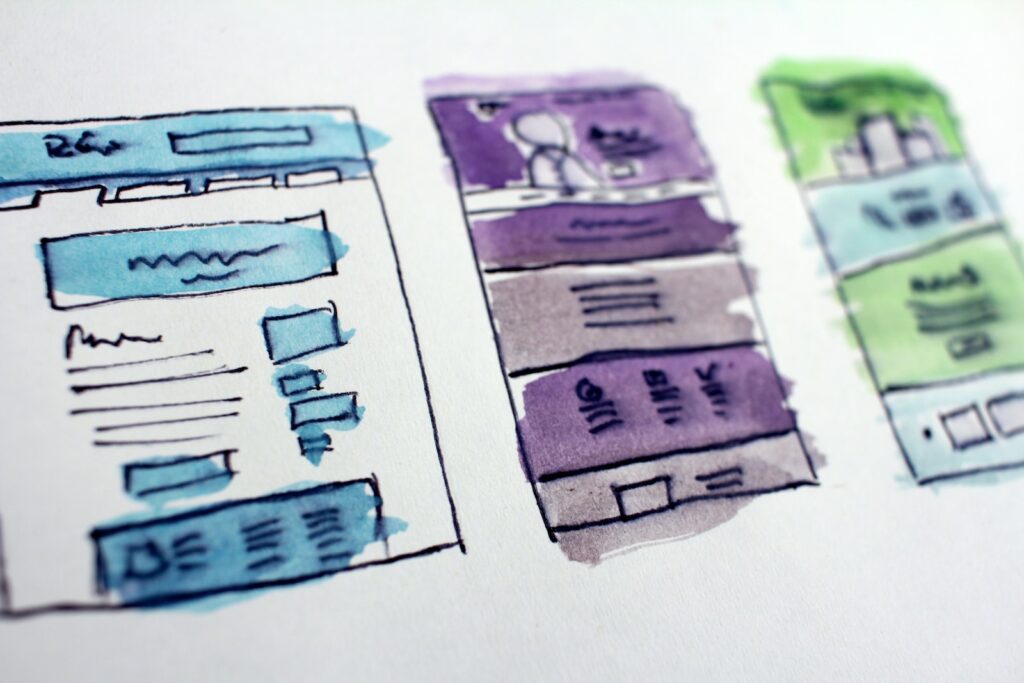In today’s digital age, businesses of all sizes rely on websites and applications to reach and engage their customers. But what goes into creating a successful digital product? One key ingredient is UI/UX design.
UI/UX stands for user interface/user experience. UI refers to the visual elements of a website or app, such as buttons, icons, and typography. UX focuses on the overall user journey, from landing on a page to completing a task.
UI/UX designers are responsible for creating digital products that are both visually appealing and easy to use. They consider everything from the placement of buttons to the flow of information to ensure that users have a positive experience.
Why UI/UX Matters
A well-designed user interface and user experience can have a significant impact on a business’s bottom line. Here are just a few of the benefits:
Increased engagement and conversion rates: A user-friendly design encourages visitors to stay on a website or app longer and explore what it has to offer. This can lead to higher engagement rates and more conversions, such as signups, purchases, or downloads.
Improved brand image: A well-designed digital product reflects well on a business. It shows that the company is professional, cares about its customers, and is committed to providing a positive experience.
Reduced support costs: A user-friendly design makes it easier for users to find the information and complete the tasks they need to do. This can lead to reduced support costs, as fewer users will need to contact customer service for assistance.
Improved SEO: Search engines like Google are increasingly taking UI/UX into account when ranking websites. A well-designed website or app is more likely to rank higher in search results, making it more visible to potential customers.
Inclusive UI/UX Design
Inclusivity is a growing trend in UI/UX design, it is a way of making digital platforms more welcoming and meaningful for everyone, no matter their abilities, age, gender, or culture. It’s not just about how things look or work, but also about how they make people feel. Inclusive design shows that businesses care about diversity and equity, and want to reach a wider audience with their digital offerings. It also shows that they value their users as individuals, and want to create a digital world where everyone can feel seen, heard, and valued.
There are many benefits to inclusive UI/UX design, including:
Wider market reach: By designing with everyone in mind, businesses can tap into a broader audience and reach more potential customers.
Enhanced brand reputation: Demonstrating that a business values all its users can boost brand perception and loyalty.
Cost efficiency: An inclusive design reduces the need for customer support and additional training, saving businesses money in the long run.
Legal compliance: Many countries have laws and regulations that mandate digital accessibility. Inclusive design helps businesses comply with these laws and avoid potential legal pitfalls.
In conclusion, UI/UX designers play a vital role in helping businesses succeed in the digital age. By creating user-centric designs that are both visually appealing and easy to use, they can help businesses increase engagement and conversion rates, improve brand image, reduce support costs, and improve SEO.
In addition, inclusive UI/UX design is essential for businesses that want to reach a wider market, enhance their brand reputation, save money, and comply with the law.
Additional Information
Here are some additional tips for improving UI/UX design:
Keep it simple: Don’t overload your users with too much information or too many options. Focus on the most important elements and make it easy for users to find what they’re looking for.
Use clear and concise language: Avoid jargon and technical terms that your users may not understand. Use plain language and make sure your instructions are easy to follow.
Use consistent design elements: Use the same design elements, such as buttons, icons, and fonts, throughout your website or app. This will help users learn how to navigate your product and make it easier for them to complete tasks.
Test your design with users: Once you have a prototype, test it with real users to get their feedback. This will help you identify any usability issues and make necessary improvements.
By following these tips, you can create a UI/UX design that is both effective and engaging for your users.






